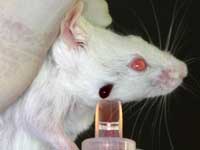Blood of Young Creatures Seem to Rejuvenate the Older Ones
A team of researchers has found that in old mice, a several-week exposure to the blood of young mice causes their bone marrow stem cells to act "young" again.

The researchers have not yet isolated the blood-borne factors that can rejuvenate old stem cells, but their results are consistent with other recent studies that show stem-cell ageing may be reversible.
The results suggest that it might one day be possible to boost the practical lifespan of stem cells, and thereby increase the body's resistance to disease and age-related degeneration.
Amy J. Wagers, Howard Hughes Medical Institute’s principal study investigator had participated in two previous studies that found that the blood of young mice appears to contain factors that could improve the repair capabilities of muscle and skin in older or diabetic mice, respectively.
In the new work, Wagers and her team decided to find out whether blood-forming (hematopoietic) stem cells in the bone marrow could also be rejuvenated.
Hematopoietic stem cells give rise to all the cells of the blood system, including immune cells and red blood cells.
As animals age, these stem cells become more numerous, but less effective at regenerating the blood system, Wagers says. That translates into a less effective immune system and a greater susceptibility to disease.
The researchers began by surgically joining the bloodstreams of pairs of mice that were of different ages, but nearly clones of one another.
After several weeks of sharing their blood systems with young mice, the hematopoietic stem cells of the older mice changed markedly.
Exposure to a younger animal's blood somehow pushed the older animal's hematopoietic stem cells back to a more youthful state, in which they were fewer in number but recovered nearly all of their blood cell-generating capacity.
Times of
Subscribe to Pravda.Ru Telegram channel, Facebook, RSS!


